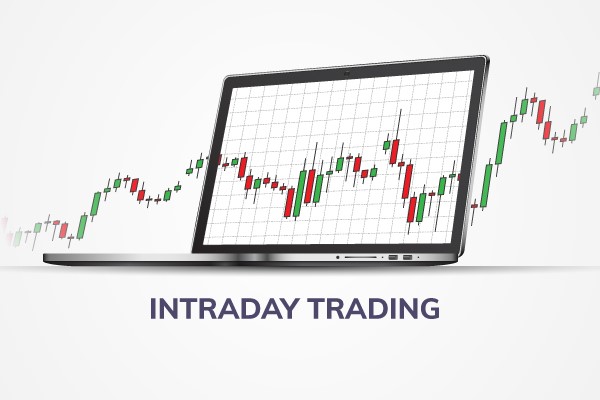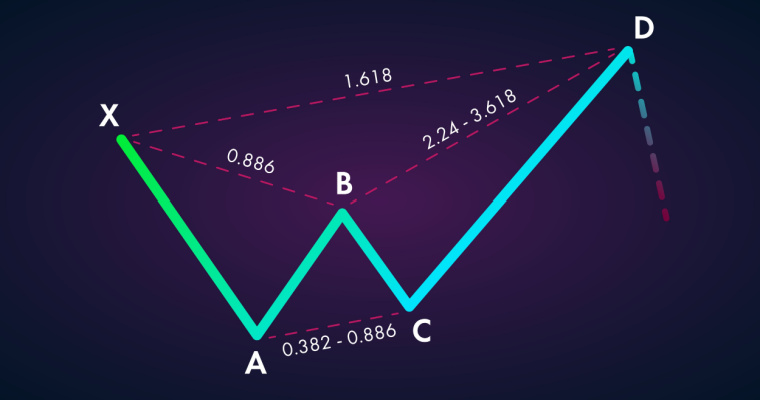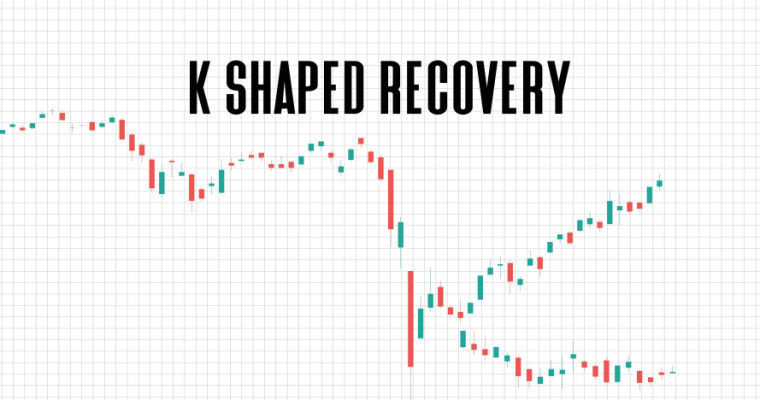Understanding Intraday Trading Strategies and Indicators to Earn Maximum Profit

Intraday trading involves traders who take advantage of price movements over a shorter time frame to reap maximum profit. This is unlike regular stock market investors who hold a position for a longer time frame. As far as intraday trading is concerned, traders capitalise on market fluctuations to enter and exit their positions within the same day to make profit.
Here’s our detailed guide on intraday trading strategies.
What is Intraday Trading?
Intraday or day trading refers to buying and selling stocks on the same day before the end of a stock exchange’s trading session. The shares of a company face fluctuations or movements in terms of their prices throughout the entire day. Traders who speculate on the price fluctuations use it to their advantage and earn profits.
It is important to note that intraday trading requires one to complete his/her transaction before the closing of the markets, and failure to do so will allow brokerages to square off the investor’s position.
How Does Intraday Trading Work?
Intraday trading functions on the principle of taking advantage of short-term increases and decreases in the price of stocks. Stock markets are highly volatile, and they exhibit dynamic fluctuations in their prices during a trading session. Traders engaging in day trading do not wish to own stocks; their primary target is to benefit from the price movements of particular stocks.
Let’s understand how it works with the help of an example:
Suppose a trader wants to trade in shares of Reliance Industries on a particular day. At the beginning of the trading session, shares of Reliance Industries were trading at Rs.2,240 per unit. He/she buys 500 shares of Reliance Industries at Rs.2,240 per share.
Now, after 3 hours of trading, the stock price rose to Rs.2,295. In such a case, the trader can indulge in intraday trade and sell all the shares bought by him. In doing so, he earns a profit of Rs.27,500 (500*55).
Intraday Trading Strategies
Here are some intraday trading tips that traders must adopt if they wish to be successful in intraday trading:
1. Time your Trade
One of the most important strategies that traders can follow while engaging in day trading is timing their trade as efficiently as possible. The goal should be to enter markets in a low-risk position and formulate better stop-loss strategies.
Every trading pattern offers some kind of entry and exit signals that denote when you should enter a trade and when you must exit the same. Individuals must adhere to these signals and decide their entry and exit strategies.
After entering a trade, traders can exit when their desired gains are achieved, or maximum loss is breached. There has to be a clear and definite exit plan once a position is taken.
2. Careful Selection of Stocks
Another strategy that one must earnestly follow is the proper selection of stocks for trading. The right stocks will help mitigate the risks involved with day trading while minimising capital erosion.
Initially, traders can start with one or two stocks in order to understand the risks, patterns and characteristics of intraday trading. One should choose stocks with high liquidity as they can be bought and sold easily. Small cap stocks which are unpredictable should be avoided.
3. Prepare and Follow a Plan
Another thing that people must follow is preparing a comprehensive intraday trading plan and following it diligently. Traders should have their targets in mind while trading. There should be a profit target and stop-loss target to which traders must strictly adhere.
It is imperative to not be greedy in search of excess profit and breach their stop loss figure as well. Traders are advised to follow a disciplined method of trading and not take impulsive and emotional decisions. Non-adherence to their plan can lead to heavy losses.
Intraday Trading Indicators
Intraday trading indicators play a vital role in a trader’s success. However, there is no fixed best indicator that will work for all traders equally. Instead, traders must use a combination of indicators to get an idea of when to enter and exit positions.
We have listed below some of the most popular intraday trading indicators used by traders:
1. Moving Average
Moving average is the most popularly used intraday trading indicator. It is a trend indicator that uses the mean value of a stock’s closing prices over a certain time. Traders can use it to identify market trends, momentum, stop loss points and reverse market trends.
2. Relative Strength Index (RSI)
The Relative Strength Index is a type of momentum indicator that helps detect overbought and oversold shares over time. RSI has a scale ranging from 0-100. If a stock’s rating on the scale reads 30 and below, the stock is oversold, and if the scale shows 70 and above marking, it is overbought.
If the market moves upward for a stock, its RSI marking will be above 50. On the other hand, if the RSI is below 50, this means the market is facing a downtrend.
Also Read
3. Bollinger Bands
Bollinger bands are one of the most widely-used tools for assessing market volatility. It is a volatility indicator that shows the relative high or low points of a security’s price relative to its historical prices. To calculate it, one needs to use the standard deviation of a stock’s price.
The Bollinger Bands is composed of three lines- A upper band with a+2 standard deviation, a 20-day simple moving average in the middle, and a-2 lower deviation lower band. These bands widen when the market moves upward due to high volatility. On the contrary, the bands narrow when market volatility decreases.
4. Momentum Oscillators
These are widely used for short-term trading. Momentum indicators signal a possible change in the price trends of a stock by measuring its rate of change over a specific time. Most momentum indicators give a number from 0 to 100, which indicates overbought or oversold conditions.
You can calculate the momentum oscillator value by dividing the current share price and its price during the previous time frame. The product of its result with 100 implies the indicator value.
Intraday Time Analysis
You can make a decent profit from intraday trading by analysing the appropriate time to enter and exit positions. To do so, you must have a comprehensive idea of the intraday trading time. This is a mandatory step before making any transactions in day trading.
Intraday trading time charts are vital in updating traders about daily price changes. Professional intraday traders rely on tips after placing their bets, and they analyse these charts to make predictions and move accordingly.
Many experts have suggested avoiding the opening hours for intraday trading due to very high market volatility. Similarly, it may be a good idea to avoid the closing hours because of a spike in volatility from closing trades. That is why they suggest picking a time frame from 10:15 AM to 2:30 PM.
Benefits of Intraday Trading
There are several benefits to intraday trading, including:
1. Leverage
Intraday traders can use leverage to increase their buying power, which allows them to trade large positions than they would be able to with their own capital.
2. Short-term Profits
Intraday traders can take advantage of short-term price movements to realise quick profits.
3. Flexibility
Intraday traders have the flexibility to enter and exit trades quickly, allowing them to take advantage of changing market conditions.
4. Diversification
Intraday traders can diversify their portfolio by trading multiple instruments, such as stocks, currencies, and commodities.
5. Low risk
Intraday traders only hold positions for a short period of time, which reduces the risk of long-term market movements.
How to Do Intraday Trading?
Here are the steps you can follow to do intraday trading:
- Create a trading account on a brokerage platform of your choice. You must carefully analyse the brokerage charges before selecting a broker.
- After opening a trading account, continue buying the stock of a company of your choice. While placing an order, categorise your trades as “intraday”. This will allow you to buy and sell the same stock in the same quantity during trading hours.
How to Select Stocks for Intraday?
Knowing the right way to select stocks to gain maximum returns from intraday trading is essential. Here are some essential tips for selecting the right stocks for intraday trading:
1. Follow the market trend
As traders, you must follow the market trend and opt for stocks that show bullish trends.
2. Avoid volatile stocks
As an intraday trader, your profits come from making accurate predictions of price movements. So, you should avoid stocks that have very high volatility.
3. Invest in transparent companies
You also need to look for opportunities to invest in transparent companies that provide sufficient information to be an authentic investment choice.
4. Choose highly liquid stocks
Liquidity is a major concern for day traders as they must sell them before the day’s end. That is why it is a good idea to choose stocks with very high liquidity.
Final Word
Traders should follow some of the basic strategies of intraday trade to generate profits and should be wary of the risks involved. But if you’re a beginner investor, our advice would be to start with mutual funds.
Navi Mutual Fund offers a wide range of low-cost funds across categories and geographies. Download the Navi app today, select the fund of your choice based on your investment goals and start investing with as low as Rs.10!
FAQs
Ans: No, a Demat account is not mandatory for day trading. This account is only required for the physical delivery of stocks. In intraday trading, the trades are settled in cash and one does not receive shares at the end of the day. A trading account with a stock broker is sufficient to start intraday trading.
Ans: The moving average is an important indicator of day trading. It helps traders get information about market trends, directions and stop-loss targets. One can prepare suitable trading strategies by assessing moving averages.
Ans: A stop-loss order is a tool used by intraday traders to avoid huge losses. A trader can direct stock brokerages to initiate a stop-loss order if the price of a stock has fallen to a minimum that an investor can endure. Selling procedures will get triggered once the stock reaches the minimum price value.
Ans: The stocks bought during delivery trading are delivered to the buyer’s Demat account. He/she can hold these stocks or sell them. On the other hand, in intraday trading, individuals do not receive actual delivery of shares in their accounts.
Ans: It is about understanding the true worth of a company and its stock. One has to carefully analyse a company’s balance sheet, profitability, financial ratios, etc., to analyse the value of its shares. This helps traders to decide whether a particular stock is worth it for a long or short-term investment.
Ans: Individuals engaging in day trading should approach it practically. They are advised to align their trades as per the market sentiments. One must swim along with the prevailing market trends to be profitable. If the markets are bullish, traders can buy and sell frequently so as to earn several small profits. It is an ideal approach rather than waiting for one big move.
On the other hand, if the stock market is bearish, one can short sell the stock and purchase it again at lower prices to earn small amounts of gain. Traders can do more than one trade a day to reach optimum levels of profit
Want to put your savings into action and kick-start your investment journey 💸 But don’t have time to do research? Invest now with Navi Nifty 50 Index Fund, sit back, and earn from the top 50 companies.
Disclaimer: Mutual Fund investments are subject to market risks, read all scheme-related documents carefully.
This article has been prepared on the basis of internal data, publicly available information and other sources believed to be reliable. The information contained in this article is for general purposes only and not a complete disclosure of every material fact. It should not be construed as investment advice to any party. The article does not warrant the completeness or accuracy of the information and disclaims all liabilities, losses and damages arising out of the use of this information. Readers shall be fully liable/responsible for any decision taken on the basis of this article.

Customer’s Feedback
No comments found.Illiquid Stocks Guide: Definition, Examples, and its Working
Illiquid stocks are part of a long-term investment strategy that is appropriate for investors who a... Read More »What is Shooting Star Candlestick Pattern in Trading?
The shooting star candlestick pattern is considered to be a bearish reversal candlestick ... Read More »What is VWAP Indicator and How to Use it for Trading
The VWAP indicator shows the volume-weighted average market price of a particular stock. You can us... Read More »What is Price Action Trading: Its Strategy, Stop Loss and Profit Targets
Price action trading is a methodology in which the trader solely relies on analysing a security’s... Read More »What is Buy the Dip Strategy in Trading – Working and Example
‘Buy the dip’ is one of the most common phrases in the stock market. It is sort of a go-t... Read More »What is the Black Scholes Model – Formula, Calculation and Assumptions
Among the important concepts in modern financial theory, the Black Scholes model, developed in 1973... Read More »What is Iron Condor and What are its Strategies?
Iron Condor is an options trading strategy that involves four options with the same expiration date... Read More »What is Harmonic Pattern and How Does it Help in Trading?
Harmonic patterns are one of the most efficient and effective trading patterns. Although they are m... Read More »What is a Contract Note and Why is it Important?
Contract note is a legal document containing the details of every stockbroker's trade on a stock ex... Read More »What is K-shaped Recovery: Indication, Example and
Economies go through multiple phases in business cycles. One such phase is a recession which is mar... Read More »Guide to Book Building – Its Types, Benefits and Process
Initial public offerings (IPOs) are priced as specified by their underwriters. The process by which... Read More »Support and Resistance in Trading: Working, Strategies, Uses and Example
Support and resistance are two of the most significant and practical concepts in technical analysis... Read More »Top 10 Chit Fund Schemes in India in 2023
Chit funds are one of the most popular return-generating saving schemes in India. It is a financial... Read More »10 Best Gold ETFs in India to Invest in April 2023
Gold ETFs or Gold Exchange Traded Funds are passively managed funds that track the price of physica... Read More »10 Best Demat Accounts in India for Beginners in 2023
Creation of Demat accounts revolutionised the way trades were conducted at the stock exchanges. It... Read More »20 Best Index Funds to Invest in India in April 2023
What is an Index Fund? An index fund is a type of mutual fund or exchange-traded fund (ETF) that... Read More »Best Arbitrage Mutual Funds to Invest in India in April 2023
Arbitrage funds are hybrid mutual fund schemes that aim to make low-risk profits by buying and sell... Read More »10 Best SIP Plans in India to Invest in April 2023
What is SIP? SIP or Systematic Investment Plan is a method of investing a fixed amount in ... Read More »10 Best Corporate Bond Funds in India to Invest in April 2023
Corporate bond funds are debt funds that invest at least 80% of the investment corpus in companies ... Read More »10 Best Bank for Savings Account in India [Highest Interest Rate 2023]
Savings account is a type of financial instrument offered by several banks. It lets you safely depo... Read More »
































